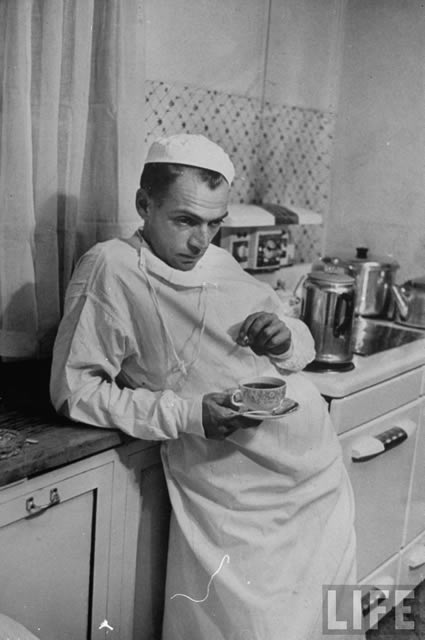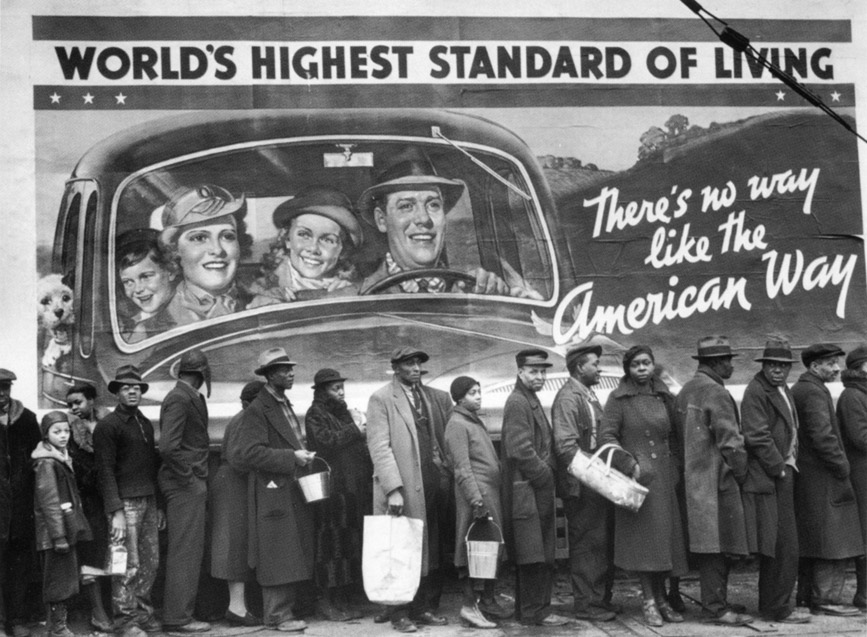Picture Story Assignment
This trip has been a shining example that time heals all wounds. In the first few years following Dominic's death, his anniversary was a dark day. Now, all these years later, it has become a day of celebration and remembrance.
_______________________________
Special Note: For this assignment it is crucial that you put all your images in a Collection called Picture Story YourLastName (Tu or Th). The Collection MUST include your name!
Objective:
Just as you can tell a story in words, you can tell a story in pictures. Good writing, combined with good pictures can make a powerful story. In this project, you are going to take a series of images and assemble them into a series of pictures that tell a story with a clear beginning, middle and end.
This assignment is capstone of everything you have leaned about taking good still images.
As you think about possible story ideas, ask yourself, “Is this a visually interesting story?” “Will I be shooting in an environment that is conducive to strong images?” Don’t choose a situation that is dark and will require you to shoot at a high ISO and a slow shutter speed.
If you plan to shoot a sports event, talk to the coach and get permission to shoot from the sidelines. You can’t get good pictures from the stands.
This story may not be about a family member, boy/girlfriend, a pet or a Greek organization!
Ideally, your goal it to tell a story of social significance that has a wider interest - this isn't a remake of the video sequence you will do later in the semester - getting someone from point a to point b. Expect to commit several weeks to this project - not around the clock coverage but your images should show the story progressing over time.
Background
The picture essay was born in German and English publications before WWII. LIFE magazine was founded by Henry Luce in 1936 with the credo:
"To see LIFE; to see the world; to eyewitness great events; to watch the faces of the poor and the gestures of the proud; to see strange things -- machines, armies, multitudes, shadows in the jungle and on the moon; to see man's work -- his paintings, towers and discoveries; to see things thousands of miles away, things hidden behind walls and within rooms, things dangerous to come to; the women men love and many children; to see and to take pleasure in seeing; to see and be amazed; to see and be instructed...."
Read the above credo several times and think about what it means. I think it is one of the most articulate and meaningful mission statements ever written.

Photographers who worked for LIFE are among the best photographers of the last century. W. Eugene Smith made some of the strongest picture stories ever published.
The Country Doctor story by W. Eugene Smith is one of those stories. The iconic picture at the left is from that story..
Caption: Country Dr. Ernest Ceriani in a dazed state of exhaustion, having a cup of coffee in the hospital kitchen at 2 a.m. after performing a cesarean section where the baby & the mother died due to complications.
Location: Kremmling, CO, US
Date taken: September 20, 1948
Photographer: W. Eugene Smith
It was through looking at LIFE that I first fell in love with pictures. Early on, I was fascinated with the window on the world that it opened. Later, as I began to study photography and photographers, I went back and became reacquainted with the masters - Smith, White, Eisenstaedt and so many more.
Margaret Bourke-White made the picture that became the first cover for LIFE in 1936. She was one of the first women photographers. Her South Africa Gold Mine. (To see without the add at the top, scroll down and then back up.) Expand to full screen and then shrink.)
Several groups have put her best pictures to music on YouTube.
Her picture below was made in the in 1937 at the time of the Louisville flood. The picture is an excellent example of juxtaposition.

Qudrat
Study the fifty image slideshow (big file may load slowly) made by Indianapolis Star photographer Matt Detrich about a little Afghanistanie boy named Qudra. The boy was flown from Afghanistan to Indianapolis for heart surgery. The Indiana National Guard facilitated the trip. Matt was the National Press Photographers Association first place winner for the best picture story in the county with the selects from this shoot.
More photo essays may be studied on the Time web site are found at
http://www.time.com/time/photoessays/.
Student Picture Stories
Your Picture Story
As you think about what you want to shoot, think about the LIFE mission statement: "To see LIFE; to see the world; to eyewitness great events; to watch the faces of the poor and the gestures of the proud; to see strange things..."
This assignment is capstone of everything you have leaned about taking good still images. You learned about style and technique, but the purpose of learning those skills is to tell stories worth telling, in pictures.
Your story MAY NOT be about a family member, boy friend/girl friend, or an animal (it may include an animal but the focus must be on a person - like a veterinarian).
You need to find a compelling subject and a story that other people will find interesting. You need to photograph the person doing what they normally do. No staging - don't ask them to perform for you. It is up to you to anticipate their behavior and capture it with your images. You will need shots that set the scene, medium shots and close up shots. You need to show faces in most pictures. You need to try for good moments and interactions.
Write down a Focus Statement for this assignment. It will be the first sentence of ALL your captions. It is a simple declarative sentence that answers the question, “What is this story about.” For example, “Coach Smith juggles the demands of the classroom and the practice field.” or “Marry creates unique art work.”
As you think about possible story ideas, ask yourself, “Is this a visually interesting story?” “Will I be shooting in an environment that is conducive to strong images?” Don’t choose a situation that is dark and will require you to shoot at a high ISO and a slow shutter speed.
If you plan to shoot a public event or a sports event, talk to the person in charge and get permission to shoot from the sidelines. You can’t get good pictures from the stands.
Pictures don't merely describe the scene, they involve the viewer with the person. Capture the emotion. It might be joy or sadness but try to capture it.
Expect to commit several weeks to this project - not around the clock coverage but your images should show the story progressing over time.
What to turn in:
You should turn in at least fifty select images for this assignment.
During the import of your pictures, create a Collection called Picture Story. If you don't do it during the import you can create it by typing G to make sure you are in the Library's Grid view. Select all 50 images you plan to submit. Under the Collections tab on the left, click on the + and Create Collection (not Smart Collection). Be sure to check "Include selected photos." Name the collection Picture Story YourLastName. This will create a new Collection called Picture Story YourLastName. Click on that Collection to open it.
From that group of 50 images, choose eight to ten images and rate them as 3-star selects (other images should be rated 1-star or 2-star). These three star images are the ones you feel best tell the story visually. (Do NOT include more than 10 three star images - part of the assignment it to see how you select the images to use). All your selects should be well composed, sharply focused and properly exposed. All 3 star images must include your name as photographer and copyright holder, captions must be included and they must have the Keyword Picture Story.
While in the Grid view, choose Attribute from the Library Filter bar and click on three stars to show only your three star selects.
Again, you MUST be working in the Picture Story YourLastName collection for this to work. Toward the bottom of the window you'll find the Sort drop down menu and you can choose Custom Order from the bottom of that menu (you and also find the option under the View menu - about half way down.)
Once you have chosen Custom Order, you can click on an image and hold down your mouse as you drag the image to whatever order you wish.
You need to include captioning for ALL your three star images. The captioning should include the basic, “Who, What, Where and Why information.
Using the J210 keyword menu, insert the key word "picture story" in the keyword field
Tone the pictures using Develop Mode in Lightroom Classic CC.
Before Exporting your Images:
You will want to arrange your images in a particular order for final presentation to tell a logical story.
- You must select the Collection Picture Story YourLastName.
- Select all your three star images.
- In the Grid mode, filter your Collection to only show the three star images.
- Go to the View menu and choose Sort/User Order. That will let you drag the images into the order you want. Now, just drag images into the order you want them to appear for your audience.
- Now, click on the Collections Picture Story YourLastName.
- If you have used the Attribute Filters to limit your sort to three star images, be sure to select None to ensure that all you images are submitted.
- Chose Export as Catalog title it: Picture Story YourLastName (Tu or Th)
- In the resulting Export as Catalog dialog box, ONLY put checks by Build/Include Smart Previews and Include available previews.
- Double check the number of images you are exporting. You'll find a line above the check boxes that says "Exporting a Catalog with ## photos."
- Upload your Catalog folder to the Picture Story folder in the J210 Spring 2018 folder on Box.com.
- All files must be have dynamic range and color corrected in Lightroom Classic CC.
- Eight to ten select pictures must have a 3-star rank.
- The Eight to ten three star select pictures must have appropriate keywords and captions.
- Your three star selects should be in their own Collection and should be arranged in the appropriate order.
| Grading Rubric | |
|---|---|
| A | The picture series includes excellent pictures that tell a story visually; with a beginning, middle and end. All pictures are clearly captioned. There are several pictures that if used alone, would be very strong pictures. The pictures demonstrate strong composition and good moments. Proper exposure and toning is assumed. Image magnification varies. |
| B | The images, taken together, don’t tell a clear story. Pictures are generally good but are not uniformly strong. Composition or viewpoint could be improved. There may be pictures missing that are necessary to tell the story. There may be problems with the metadata. |
| C | Pictures are average. Better pictures could be made of the subject. There may be either technical or content problems. Major problems with Lightroom work may exist. Metadata may be missing. |
| D | There may be insufficient pictures to tell the story. Major technical problems may be evident. |
